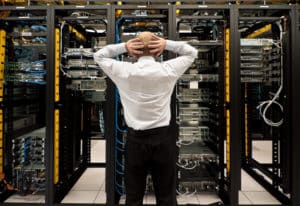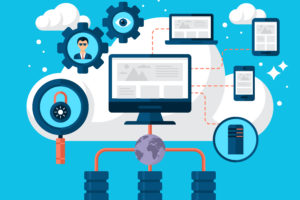There are not many mundane places in our lives that fill us with more dread than the DMV. Popular entertainment has taken stabs at this many times but one of our favorites is a scene from Supernatural. You do not even have to know the storyline to understand the irony behind the situation.
When the two main characters take up working for the ‘big man downstairs’ they are not at all shocked to find out they are to receive their assignments from the DMV. Complete with a ticketed wait time and everything! Your own personal version of the fiery underground might include some version of the DMV, but not too long ago the MN DMV was all but up in flames.
Several years and millions of dollars in the making, the MNLARS (Minnesota Licensing and Registration System) was a spectacular failure. The MN office of the legislative Auditor released a scathing statement in February of 2019 detailing the factors that contributed to the failure of the project. In the end they concluded that ‘agency leadership did not take sufficient steps to ensure that this large and risky project would succeed’.

Specifically, leadership was cited for lack of policies, procedures, adequate staffing, and failing to test the system properly. In the end, the project took several more years and millions of dollars overbudget than expected. The result was a broken system that left people scratching their heads as to how we could fail so horrendously.
Things may be working a little bit more smoothly now but SMBs (small and medium businesses) can take a lot away from this example. Namely, being prepared any outcomes or problems that could arise on your journey to success.
Therefore, Vodigy Technologies heavily recommends that all our clients have a solid DRP (Disaster Recovery Plan) to back-up their technology.
What is this?
Around 75% of small businesses have no disaster recovery objectives or plans in place. This it a scary number. Especially with so many companies relying on remote access and data-driven applications for employees. With no DRP in place, unexpected downtime could end up costing your entire business.
An effective DRP means different things for each client. A few things can be considered across the board such as:
Policy Changes – For example, has your company’s definition of disaster changed? Policies may need to be updated in accordance with lessons learned earlier during the pandemic.
SLA Requirements – In the event of a disaster, how will your business continue to uphold SLA agreements?
Remote Technology – Your IT team should be able to seamlessly connect to every employee and do so in a secure manner. Especially in the haste of the pandemic, some networks may have been thrown together haphazardly to keep things running.
Communication – In the event of a disaster or network failure, how will your company communicate with one another? Having a high-level ‘phone-tree’ of sorts in place can make or break disaster recovery.
Pre-pandemic strategies need to evolve.
As stated above, a significant number of our pre-pandemic policies are no longer applicable as the technology landscape has changed drastically. It is important to keep your disaster recovery plan regularly updated and plans are regularly reviewed for efficiency.
Check, check. Are there any Mic's in the audience?
One of the MNLARS project’s biggest failures was the lack of testing to ensure proper functioning. It is equally as important for your SMB to test your DRP. Do not take the chances of being caught off-guard, make sure everything is runs as it should right from the start.

Oooof, that's a headache!
Planning, testing, and executing a Disaster Recovery Plan can be a strenuous task. We understand that sometimes, you don’t have time to get into the nitty-gritty of IT. Afterall, you have a business to run.
Thank goodness Vodigy is here to help!
Let our knowledgeable IT support experts help guide your journey to technological success. Reach out to Vodigy Technologies today.




